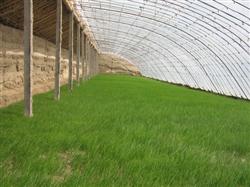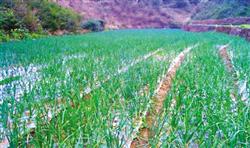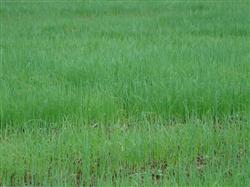Key techniques of Onion Seedling production

First, rational fertilization. The onion seed is small, the seedling growth is slow, the string root is short, the root quantity is small, and the absorption and utilization of fertilizer and water is not high. The seedbed should choose plots where the soil is fertile and loose, can remain moist, and has not been planted with onions in 3-5 years. Combined with deep turning, the mature organic fertilizer is about 10 kg / m2, and the nitrogen and phosphorus compound fertilizer is 60-80 g / m2. Mix evenly, smooth and steady. The experiment shows that rational fertilization and cultivating strong seedlings is one of the key measures to increase production. The average weight per plant and root weight of seedlings applying nitrogen, phosphorus fertilizer and nitrogen, phosphorus and potassium fertilizer at seedling stage were twice as much as those without basal fertilizer. Second, pour enough bottom water. According to the experience of vegetable farmers for many years, wet sowing of onion seedlings is better than dry sowing. The bottom water is full with a depth of not less than 6 cm to meet the needs of onion emergence. Midway irrigation hardens the seedling bed, which is not conducive to the robust growth of the whole seedling and onion. Third, sowing seeds at the right time. Due to the different climatic conditions, the specific sowing date can be used as a graphic method to determine the local sowing date. That is, take the temperature as the ordinate and the month as the Abscissa, draw a curve with the value of the monthly average temperature, find out 15 ℃ points above, make a vertical line to the Abscissa through this point, and push forward the intersection with the Abscissa for another 40 days, that is, the suitable sowing time for the area. There are suitable sowing dates all over the country. This is derived from production practice for a long time and should be observed rather than changed at will. If sowing seedlings in autumn too early, early bolting may occur in the second year and sowing too late, seedling nutrients are too small, it is difficult to survive the winter, it will also bring adverse consequences to production, but the loss outweighs the gain. Fourth, the soil cover is moderate. After the onion falls into the water and sows, it is necessary to cover the soil in time, sift it with rotten farm manure, and cover it with a thickness of 0.8-1.50 cm. If the cover is too thin, it is easy to produce "capped seedlings", causing the onion to take root too shallow and die, or although it is not dead, it is not strong to grow, and it is easy to lodge. Too thick covering soil will also affect the whole seedling. Fifth, shading the sun in time. Onion germination does not need light, and there is no high demand for oxygen. After onion sowing, it should be covered with film or grass in time to keep the soil moist and prevent rainstorm erosion. Sunshade film should be used where possible. If the conditions are not available, local materials can be used to cover with grass. According to the experience of vegetable farmers, the air permeability of Artemisia annua mulch is better than that of wheat straw, and the seedbed pollution is less. Sixth, foliar spraying fertilizer. Spraying phosphorus on onion leaves can promote the development of root system. This is because onion absorbs and transports phosphorus from soil very slowly. according to relevant data, it takes about 3-4 days from root tip absorption to leaf tip, and foliar phosphorus spraying can absorb and transport in an hour or two. In order to slow down the rooting of onion seedlings, spraying 0.2% Mel 0.4% potassium dihydrogen phosphate on the leaves of onion seedlings 10-15 days before planting can improve the rooting ability of onions after planting. This is a beneficial method at no cost, and it is worth advocating.
- Prev

Onion seedling raising should be good at "five hurdles"
Onion has the characteristics of low input, high yield, simple management and high benefit, so it is an ideal vegetable variety for vegetable farmers to commercialize production and increase income. The first ten days of September is the best time for raising onion seedlings. The main points of seedling raising techniques are introduced as follows. Seed selection can choose Ziyu No. 1 and Ziyu in production.
- Next

What to do when onion seedlings are frozen
The center of onion seedling management is to cultivate healthy seedlings at the right age, that is, to prevent excessive seedlings from leading to early bolting, and to avoid excessive growth and aging of seedlings. 1, water management When sowing, after watering enough water, cover the film and press the edge, until the emergence, do not remove the film, in order to keep warm and water. After emergence, bed soil often remains...
Related
- Where is it suitable to grow horseradish in China? it is expected to see the middle altitude horseradish in Alishan.
- How to prevent tomato virus disease reasonably? (Control methods included)
- Many people like to plant towel gourd on the balcony. What are the main points of this method and management?
- What crops can chili peppers be mixed with?
- Fertilization techniques and matters needing attention in Tomato
- What are the grafting techniques for peach seedlings in spring?
- Harm and control methods of root swelling disease of Chinese cabbage
- What are the pests of sweet potatoes? How to prevent and cure it?
- Symptoms, causes and Control methods of navel Rot in Tomato
- The cause of "Cucumber rotten bibcock" in Farmers' planting Cucumber and its Control Plan

